Role of cholesterol homeostasis in MASH-driven hepatocellular carcinoma: not just a neutral fat
Hepatocellular carcinoma (HCC) is the most common type of liver cancer and its death rate is rising faster than that of any other cancer, while we still lack effective treatments. The increasing inc
[...] Read more.
Hepatocellular carcinoma (HCC) is the most common type of liver cancer and its death rate is rising faster than that of any other cancer, while we still lack effective treatments. The increasing incidence of liver cancer in western countries is closely associated with the growing prevalence of metabolic dysfunction-associated steatohepatitis (MASH) linked to metabolic diseases. While the contribution of lipids in the progression of MASH pathogenesis and its progression to HCC is well recognized, the specific contribution of cholesterol is subject to controversy. The liver plays a central role in cholesterol metabolism, where the majority of its biosynthesis, storage, excretion, recycling, and conversion into bile acids occur. Moreover, cholesterol is implicated in numerous hepatocyte cellular processes, encompassing endoplasmic reticulum function, formation of lipid microdomains in the plasma membrane, metabolism of lipoproteins, and mitochondrial function and performance. Therefore, it is not surprising that cholesterol plays key roles in initiation, promotion, and survival of HCC cells and there are several lines of evidence pointing to that cancer cells are subverting cholesterol metabolism to foster their proliferation and survival through various mechanisms. This narrative review provides a concise overview of the physiological and pathological roles of cholesterol in the transition from healthy hepatocytes to HCC, in the context of MASH. Gaining further understanding of how hepatic cancer cells disrupt cholesterol homeostasis and how these perturbations impact cancer progression will facilitate the identification of novel and more effective cancer treatment strategies in this complex and devastating disease.
Vicent Ribas
Hepatocellular carcinoma (HCC) is the most common type of liver cancer and its death rate is rising faster than that of any other cancer, while we still lack effective treatments. The increasing incidence of liver cancer in western countries is closely associated with the growing prevalence of metabolic dysfunction-associated steatohepatitis (MASH) linked to metabolic diseases. While the contribution of lipids in the progression of MASH pathogenesis and its progression to HCC is well recognized, the specific contribution of cholesterol is subject to controversy. The liver plays a central role in cholesterol metabolism, where the majority of its biosynthesis, storage, excretion, recycling, and conversion into bile acids occur. Moreover, cholesterol is implicated in numerous hepatocyte cellular processes, encompassing endoplasmic reticulum function, formation of lipid microdomains in the plasma membrane, metabolism of lipoproteins, and mitochondrial function and performance. Therefore, it is not surprising that cholesterol plays key roles in initiation, promotion, and survival of HCC cells and there are several lines of evidence pointing to that cancer cells are subverting cholesterol metabolism to foster their proliferation and survival through various mechanisms. This narrative review provides a concise overview of the physiological and pathological roles of cholesterol in the transition from healthy hepatocytes to HCC, in the context of MASH. Gaining further understanding of how hepatic cancer cells disrupt cholesterol homeostasis and how these perturbations impact cancer progression will facilitate the identification of novel and more effective cancer treatment strategies in this complex and devastating disease.
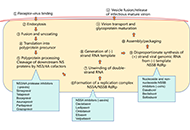 Key points for the management of hepatitis C in the era of pan-genotypic direct-acting antiviral therapyOpen AccessReviewHepatitis C viral infections present a significant global health challenge, carrying substantial economic implications. These infections manifest in various clinical forms, including acute and chron [...] Read more.Hao Xiong, Jinsheng GuoPublished: June 18, 2024 Explor Dig Dis. 2024;3:226–240
Key points for the management of hepatitis C in the era of pan-genotypic direct-acting antiviral therapyOpen AccessReviewHepatitis C viral infections present a significant global health challenge, carrying substantial economic implications. These infections manifest in various clinical forms, including acute and chron [...] Read more.Hao Xiong, Jinsheng GuoPublished: June 18, 2024 Explor Dig Dis. 2024;3:226–240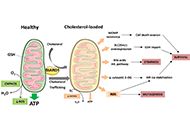 Role of cholesterol homeostasis in MASH-driven hepatocellular carcinoma: not just a neutral fatOpen AccessReviewHepatocellular carcinoma (HCC) is the most common type of liver cancer and its death rate is rising faster than that of any other cancer, while we still lack effective treatments. The increasing inc [...] Read more.Vicent RibasPublished: June 14, 2024 Explor Dig Dis. 2024;3:203–225
Role of cholesterol homeostasis in MASH-driven hepatocellular carcinoma: not just a neutral fatOpen AccessReviewHepatocellular carcinoma (HCC) is the most common type of liver cancer and its death rate is rising faster than that of any other cancer, while we still lack effective treatments. The increasing inc [...] Read more.Vicent RibasPublished: June 14, 2024 Explor Dig Dis. 2024;3:203–225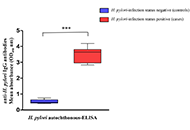 Development and evaluation of an in-house ELISA based on autochthonous antigens for detecting IgG anti-Helicobacter pylori in Cuban adultsOpen AccessOriginal ArticleAim: This study aimed to develop and evaluate an in-house enzyme-linked immunosorbent assay (ELISA) based on autochthonous antigens to detect immunoglobulin G (IgG) antibodies against Helicobacte [...] Read more.Rosabel Corrales ... Rafael LlanesPublished: May 31, 2024 Explor Dig Dis. 2024;3:190–202
Development and evaluation of an in-house ELISA based on autochthonous antigens for detecting IgG anti-Helicobacter pylori in Cuban adultsOpen AccessOriginal ArticleAim: This study aimed to develop and evaluate an in-house enzyme-linked immunosorbent assay (ELISA) based on autochthonous antigens to detect immunoglobulin G (IgG) antibodies against Helicobacte [...] Read more.Rosabel Corrales ... Rafael LlanesPublished: May 31, 2024 Explor Dig Dis. 2024;3:190–202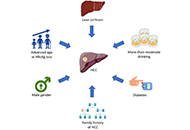 Hepatocellular carcinoma surveillance after HBsAg seroclearanceOpen AccessReviewHepatitis B surface antigen (HBsAg) seroclearance is considered the functional cure and the optimal treatment endpoint for chronic hepatitis B (CHB). Patients with CHB who cleared HBsAg generally ha [...] Read more.Jimmy Che-To Lai ... Terry Cheuk-Fung YipPublished: May 11, 2024 Explor Dig Dis. 2024;3:175–189
Hepatocellular carcinoma surveillance after HBsAg seroclearanceOpen AccessReviewHepatitis B surface antigen (HBsAg) seroclearance is considered the functional cure and the optimal treatment endpoint for chronic hepatitis B (CHB). Patients with CHB who cleared HBsAg generally ha [...] Read more.Jimmy Che-To Lai ... Terry Cheuk-Fung YipPublished: May 11, 2024 Explor Dig Dis. 2024;3:175–189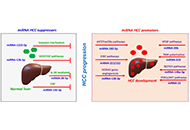 Deciphering the cross-talk between miRNA and tight junctions in hepatocellular carcinomaOpen AccessReviewThe most common type of liver cancer is hepatocellular carcinoma (HCC) causes a lower survival rate even after systemic treatment. Previous studies have shown evidence that various molecular and epi [...] Read more.Siva Bala Subramaniyan, Balasubramaniyan VairappanPublished: May 11, 2024 Explor Dig Dis. 2024;3:163–174
Deciphering the cross-talk between miRNA and tight junctions in hepatocellular carcinomaOpen AccessReviewThe most common type of liver cancer is hepatocellular carcinoma (HCC) causes a lower survival rate even after systemic treatment. Previous studies have shown evidence that various molecular and epi [...] Read more.Siva Bala Subramaniyan, Balasubramaniyan VairappanPublished: May 11, 2024 Explor Dig Dis. 2024;3:163–174